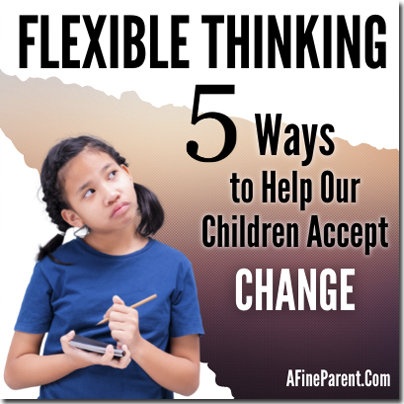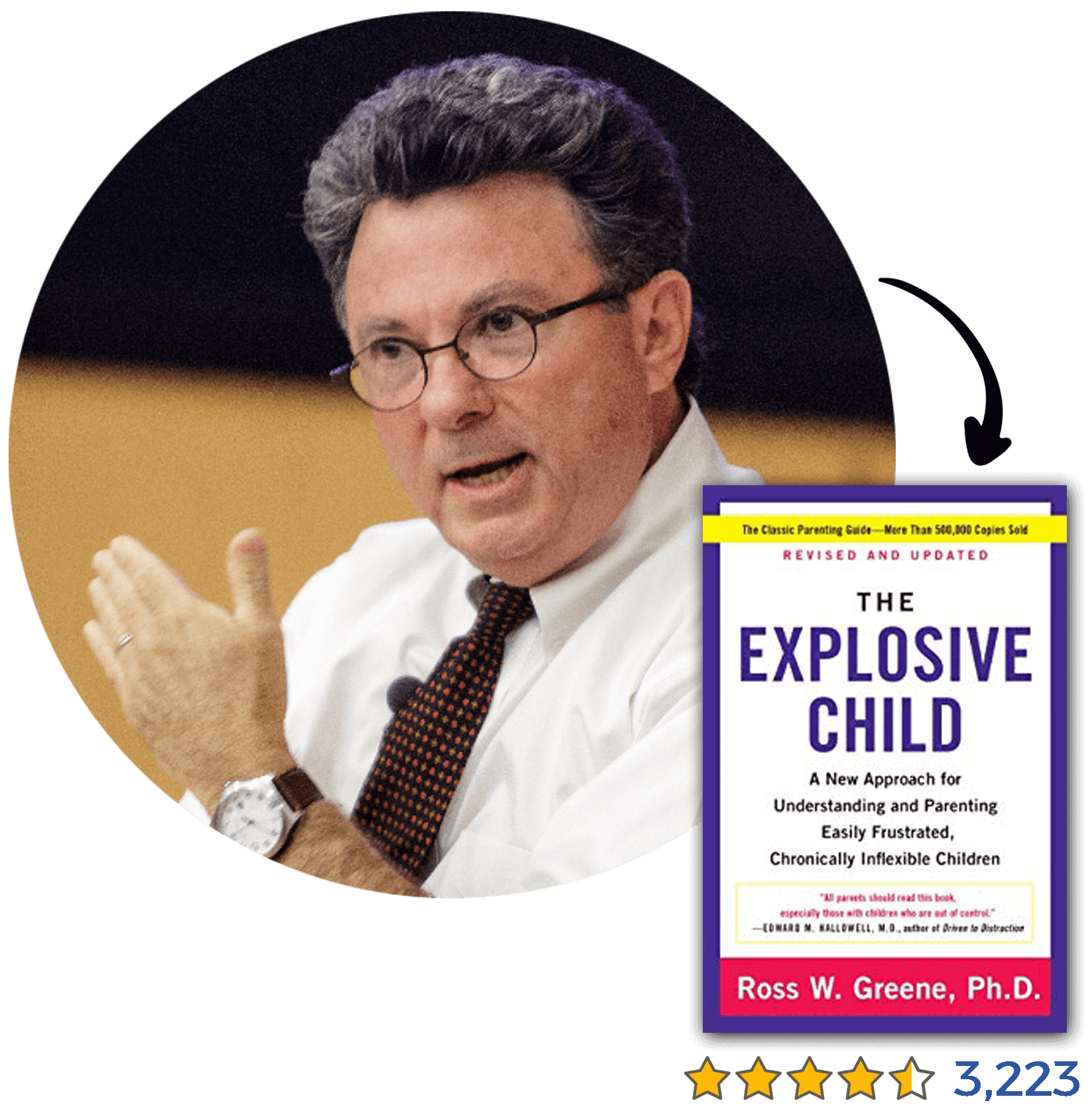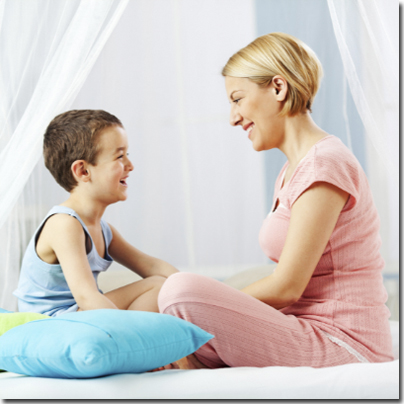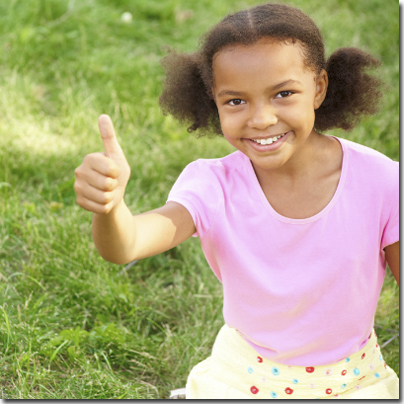 It started out as a typical lunch with my five young kids. I had made their favorite macaroni and cheese and was getting ready to dish up when I noticed their typical plates were still in the middle of the dish-washing cycle.
It started out as a typical lunch with my five young kids. I had made their favorite macaroni and cheese and was getting ready to dish up when I noticed their typical plates were still in the middle of the dish-washing cycle.
In our family, each child is in charge of washing their dishes in the sink after a meal. They have their own colored plate so it’s easy to see who still needs to do their chore before the next meal. But every now and then I throw them in the dishwasher to make sure they’re really clean.
I used some random plates from the cupboard and happily placed one in front of my 4-year-old.
She lost it.
Refused to eat, argued, screamed, and nonstop requests for her pink plate. She continued to escalate until the plate (and her lunch) went flying all over me and the floor.
After a seemingly endless meltdown, the dishwasher cycle ended and I placed the pink plate in front of her, explaining that I would be happy to get her more lunch but she’d need to help me clean up the mess.
The interesting part?
She kept screaming for her pink plate even though it was right in front of her! Her emotions had completely overridden her logical brain and even her senses. An hour later, I was exhausted and wished there was something I could do to help my children accept change and the unexpected better.
Sound familiar?
Why Is Flexible Thinking so Difficult?
 Kids who throw epic meltdowns when plans change or when something isn’t as expected aren’t misbehaving; they just haven’t yet developed a specific skill in their executive functioning toolkit.
Kids who throw epic meltdowns when plans change or when something isn’t as expected aren’t misbehaving; they just haven’t yet developed a specific skill in their executive functioning toolkit.
Executive functioning is a set of mental skills that develop in the part of our brain responsible for complex thinking, planning and organizing; this includes working memory, the ability to multitask, and having self-control.
These skills are essential in successfully running through our day: we remember where we put our car keys or homework, we can follow directions, stay on task emptying the dishwasher, and refrain from acting out in frustration.
Cognitive flexibility is another core aspect of executive functioning. Cognitive flexibility refers to the ability to adapt our behavior and thinking to transitions, roadblocks, or when there is a disconnect between our expectations and reality.
To break it down even more, we use this mental flexibility in two ways:
- Being able to understand concepts in different perspectives, much like how we can usually solve a math problem using numerous ways/equations. For example, learning a new spelling word in school, then coming home to recognize it in a book or a cereal box.
- The ability to modify thinking in response to a change in expectations, demands, or situations (this is often what most of us think of when we consider what flexible thinking means).
Some everyday opportunities for children to develop flexible thinking could be losing a game they expected to win, understanding another child’s perspective in an argument, or being asked to stop an epic Lego creation because it’s bedtime.
 In his book, The Explosive Child, Dr. Ross Greene explains that many incidences of misbehavior are due to facing frustration with underdeveloped coping skills. If our children can’t adapt to an unexpected circumstance, it’s not willful disobedience or stubborn personality–they just don’t have the tools they need to deal with the moment in a constructive manner.
In his book, The Explosive Child, Dr. Ross Greene explains that many incidences of misbehavior are due to facing frustration with underdeveloped coping skills. If our children can’t adapt to an unexpected circumstance, it’s not willful disobedience or stubborn personality–they just don’t have the tools they need to deal with the moment in a constructive manner.
 Interested to learn more about how to help an easily frustrated child accept disappointment and change? We partnered with Dr. Ross Greene, clinical child psychologist and New York Times bestselling author, to better understand difficult behaviors and work towards resolving them with practical solutions.
Interested to learn more about how to help an easily frustrated child accept disappointment and change? We partnered with Dr. Ross Greene, clinical child psychologist and New York Times bestselling author, to better understand difficult behaviors and work towards resolving them with practical solutions.
This packed masterclass is one of the 60+ masterclasses you get when you join the AFineParent Academy today. Click here to learn more.
Kids are still developing these flexible thinking and coping skills, so it’s no wonder they can’t always handle certain situations with grace. While children begin to develop the areas of the brain responsible for these skills shortly after birth, growth does not really begin to take off until ages three to five and will continue to develop through adolescents and early adulthood!
So, the question is that if brain development takes that long to mature, can we really influence the executive functioning skills of our children?
The good news is yes, we can build up these skills, especially when we take into account internal and environmental factors that can hinder children’s executive function development, such as:
- Cognitive delays or learning disabilities (such as ADHD)
- Health challenges (including mental health)
- Low-income households
- Abuse, neglect, and/or trauma
- Toxic stress or sensory overwhelm
- Unclear expectations or lack of proper modelling of executive functioning skills
- Self-blame or shame over poor executive function skills
- Physiological needs are not met, such as proper sleep and nutrition
The takeaway from this list is that we can only grow and access our executive function skills when our basic needs are met. If a child is experiencing any of the factors listed above, the brain won’t be able to easily learn new skills or adapt to a situation that needs higher cognitive functioning.
The best way to cultivate these skills is to make sure our children have a strong foundation with proper nutrition, enough sleep, and that they have a compassionate, safe and secure environment.
Curious about how you can influence the development of executive functioning skills in your children? Here are 5 ideas for jump-starting your kids’ learning in a way that is tangible and memorable, so you can utilize them for intentional practice.
#1: Explain Flexible Thinking by Using Spaghetti Noodles
 Flexible thinking, especially to a young child, is a very abstract idea that may be difficult to grasp. In general, children tend to be more concrete thinkers; this means that they can more quickly learn when taught using items, objects, and people they can see and touch. We can use the concrete world around us to effectively teach abstract ideas to our children.
Flexible thinking, especially to a young child, is a very abstract idea that may be difficult to grasp. In general, children tend to be more concrete thinkers; this means that they can more quickly learn when taught using items, objects, and people they can see and touch. We can use the concrete world around us to effectively teach abstract ideas to our children.
This is where spaghetti comes into play!
Using spaghetti to teach children (particularly ages 3 to 12) about flexible thinking can be meaningful and helpful. Here is how I do it with my young ones:
- I explain what flexible thinking means and have them come up with some examples of when things didn’t go as expected.
- Next, I validate how frustrating or disappointing it can be…and how that can affect how we treat others in our frustration.
- I use a straight (uncooked) spaghetti noodle to represent rigid thinking and a cooked spaghetti noodle for flexible, loose thinking.
- I show how straight spaghetti thinking can cause us to lose control and enact the thought-feeling process until – SNAP! – the noodle (and our self-control) breaks if things don’t go our way.
- Meanwhile, we play with the loose spaghetti to show how we can change pathways and deal with change better (and we list strategies covered in the next section).
- Each child then gives an example of straight spaghetti noodle thinking that they had recently (“I thought point A would go to point B, but then…”) and an example of loose spaghetti thinking OR how they could better react next time.
We use the spaghetti noodle phrase quite often to reinforce the lesson in everyday life. As soon as I notice their frustration meters rising, I will ask them to pause and reflect whether they are showing straight or loose noodle thinking.
Oftentimes, this is enough to get their logical thinking back in the game to come up with an alternative action to the one that was brewing.
#2: Brainstorm a “Plan B” & Practice
 For a child who struggles with flexible thinking, coming up with alternate solutions to a problem can be difficult. We can encourage working together to brainstorm “plan B” (or a few possible alternatives) for situations that we know our child will face. For example, if our child is about to ask a friend to come over to play, but historically the disappointment they have felt when the friend is unavailable has been crippling, we could start by focusing on that real-life problem.
For a child who struggles with flexible thinking, coming up with alternate solutions to a problem can be difficult. We can encourage working together to brainstorm “plan B” (or a few possible alternatives) for situations that we know our child will face. For example, if our child is about to ask a friend to come over to play, but historically the disappointment they have felt when the friend is unavailable has been crippling, we could start by focusing on that real-life problem.
Another tactic for brainstorming could be to begin with scenarios that are much easier to navigate— likely made up and even silly— and then as our children brainstorm solutions to those, move to more difficult, real-life situations. This is similar to using behavioral momentum, in which we lower the complexity of a task and then slowly build it back up as we see our children succeed.
Let’s look at some simple ways to do this:
- Have an easygoing “what if?” game, asking your child to imagine an alternate story line in fairytales or to their favorite movie
- Have a backwards-theme day and ask your children to brainstorm ideas for clothing, meal time, and play
- Host a debate where your child needs to present points both for, and against, something silly or fun like “should we be allowed ice cream for breakfast?”
Once your child is comfortable with low-key games, then you can move on to some guided opportunities to practice a plan B:
- Stage a baking session with your kids and introduce a simple recipe they’ll need to adapt, such as a basic muffin recipe
- As you go through the ingredients, discuss how you can use substitutes or adapt the flour, sweetener, and sometimes even the eggs. You could make the mix into a loaf or add icing on top to make healthier cupcakes.
- Have your children brainstorm one way they can change the recipe alongside you. If they love baking, ask them to adapt the same recipe differently the next time.
After a few guided Plan B sessions, you can step up their flexible thinking by asking them to be a “change conductor” in their daily set routine by:
- Having them choose one micro-change each day or all week. Creating a quick sticker chart is a simple way to provide a visual reminder.
- Focusing on areas in which micro-changes could happen; this may include their bedtime routine, how they eat their food, how they set up a game, or choosing a different route home.
- Playing the “left, right, straight” game. My kids love to play this game on the way home as they can decide where we take a turn by calling out directions (once it’s getting late or we’re going too far, I’ll announce it’s my turn to pick).
Having our child brainstorm scenarios and practice flexible thinking within a safety net will protect their sense of control while boosting their confidence in their problem-solving skills.
#3: Create a Visual Reminder
 Once our children understand flexible thinking and have had a chance to practice alternate scenarios, it’s time to incorporate this skill into their everyday routine.
Once our children understand flexible thinking and have had a chance to practice alternate scenarios, it’s time to incorporate this skill into their everyday routine.
We likely all know how the structure of a daily routine helps children thrive. But what if they fall apart when life clashes with that fixed schedule telling them what to expect?
We can take steps towards resolving this problem by including our kids in the weekly planning and creating a visual change board that highlights any changes to our child’s usual routine. This could include:
- Starting a weekly family meeting to go over the calendar
- Having our child fill in their board with appointments, school events, days off school, weather reports, anything out of sync with their usual routine and expectations for the week
- Discussing how these events could impact the child (ie: if another sibling has a dental appointment, it may mean that for other children they will have to go along or stay with a sitter)
- Brainstorming plan Bs
- Practicing alternate actions as well as positive words to use if the anticipated schedule is altered
A change board is not only helpful as a visual heads-up for changes, but we can also use it to display positive phrases our children plan to use when they’re disappointed or frustrated. Once our children begin using negative self-talk out loud, it is often already to the point in which self-esteem is affected.
If they’ve lost the game, suddenly it’s, “I never do anything right.”
If their friends are busy, we hear, “Nothing ever goes my way.”
We can help them reframe their thinking by adding onto their visual change board the positive phrases they plan to use when they’re disappointed or frustrated.
We can also use this time to teach our kids questions to ask to clarify the schedule or de-escalate a situation, such as “Would we be able to do this today?” or “I’m not quite ready to go. May I have two more minutes to finish?”
#4: Use Frontloading
 When my daughter was younger, she was terrified of mascots. One year, our family was lucky enough to be invited to an exclusive event at our city’s annual summer festival, filled with free rides at the amusement park, a sneak peek into ambulances and fire trucks, an opportunity to watch the feature show…and mascots handing out gifts and treats.
When my daughter was younger, she was terrified of mascots. One year, our family was lucky enough to be invited to an exclusive event at our city’s annual summer festival, filled with free rides at the amusement park, a sneak peek into ambulances and fire trucks, an opportunity to watch the feature show…and mascots handing out gifts and treats.
I didn’t warn her about them – I thought she might worry too much and miss the rest of the fun. We missed the fun anyway, because as I was busy helping some kids onto rides, a towering bear mascot swept right up to her and started miming for a hug.
Her spaghetti noodle snapped and there was no calming her. We had to leave with her screaming the whole ride home, disappointed siblings in tow.
I learned (the hard way) that kids do better with warnings and countdowns so they can mentally prepare and rehearse their behavior beforehand.
The next year we attended, there were no meltdowns! Before we left home, we reminded her there would be mascots and brainstormed ideas of what she could do (she wanted to stay in the stroller and wanted me to pass her the gifts from the mascot). We also role-played and practiced her saying “no thank you” in a clear voice so the mascots could know she wasn’t interested. When we saw a mascot, we would let her know in a calm voice they were coming so she could be ready.
This event is now a treasured memory for our family because of brainstorming solutions, rehearsing, and using frontloading before we got there.
Frontloading is a way to prepare our children ahead of time for something that is going to happen. It can be very simply a “heads up” to explain the details of the situation and give clear expectations of what we need our child to do.
Here are some practical ways to frontload effectively:
- Give a verbal warning beforehand (“you have two more minutes to finish your Lego, then it’s time for bed”)
- Pull out visual timers, sensory timers or have a music playlist countdown to give them a better idea of the timeframe
- Role-play appropriate behavior for specific situations by using social stories or having them draw their own comic strip
- Discuss what the child needs to bring and do to be ready for an event (for example, if they have soccer practice on Thursday, they’ll need to make sure their jersey is washed and their sports bag has everything they need by then)
- Create a transition period between activities with a fidget toy or having a short movement or mindfulness break
#5: Praise Their Successes!
 Developing executive functioning skills is a journey that takes perseverance and our children need a cheerleader in their court!
Developing executive functioning skills is a journey that takes perseverance and our children need a cheerleader in their court!
Some parents may confuse praise with permissiveness, false sincerity or enabling misbehavior; but when used purposefully, praise can be a very strong and effective motivator.
Praising a child affirms their self-worth: you love them for who they are and believe in them. Noticing their successes teaches your child that their hard work matters to you and boosts their confidence and cooperation.
In fact, the Journal of Educational Psychology featured a study that compared praising good behavior in students as opposed to giving a rebuke following misbehavior.
The authors stated there was a direct correlation between how much praise teachers gave their students and improved behavior, focus, and motivation. Alternatively, there was significantly more misbehavior and resistance in the students who received a scolding or punishment.
What does this mean for our children still developing their executive functioning skills?
It means that when we’ve practiced flexible thinking strategies for a significant amount of time or when our kids are older and we feel like they should get it by now, but they still have a meltdown when their event is rained out or when they outgrow their favorite pajamas… It’s time for us to take a breath and practice our own cognitive flexibility.
Remember, these skills won’t be fully developed until adulthood. It can be very easy to assume inflexible behavior is willfulness over brain function; we’ve all been guilty of thinking this way at some point. Reprimanding or jumping into a lecture when the child is in a high emotional state is most often going to hinder more than help.
What can we do instead that will make a difference in their desire to improve?
- Validate their feelings following a meltdown; this communicates that we believe in them and will continue to support them
- Highlight their perseverance at learning this new skill
- Affirm their efforts to make small changes and try new things
- Try their brainstorming suggestions, even if we’re not sure it’ll turn out
- Remind them this is a journey, not a race and that we are proud of their progress
- Praise specific moments of flexible thinking as often as you can
When our children are praised for their cognitive flexibility successes, they will be more willing to step out of their comfort zone, engage in new thinking patterns and take ownership in their behavior.
The 2-Minute Action Plan for Fine Parents
The next time your child is struggling or having a meltdown, consider these things and take a few minutes to reflect on them:
- Is there a pattern in your child’s meltdowns caused by inflexible thinking? Was it a change of plans or a set-in-stone expected outcome?
- Have you asked about and validated their emotions?
- Could you have prevented the situation by discussing a plan B beforehand or giving a transition warning? Have you asked your child what could help?
- Did you wait for them to calm down before jumping in to make it a teaching moment?
- Have you shown flexible thinking when your child’s meltdown interrupts your plans for that moment? Are you willing to listen to your child’s needs and suggestions?
The Ongoing Action Plan for Fine Parents
Change is inevitable and we all know (deep down) that it can be a good thing…especially if your child is equipped to handle it well. Help your child grow their flexible mindset in moments of calm over the next few weeks to prevent more reactionary meltdowns:
- Explore with your child their personal triggers and how that can affect their emotions/behavior. For example, my 9-year-old is learning that disappointment can quickly set him off. Naming the emotion before he erupts can prevent poor choices and lead him to choose a self-regulation activity instead.
- Brainstorm with your family some helpful strategies to try this week to create more realistic expectations and smooth transitions.
- Create a family weekly calendar and a visual change board together and display them where everyone can see them easily. Discuss upcoming appointments and their goals for the week, and come up with unexpected scenarios with a plan B in mind.
- Celebrate your child’s moments of flexible thinking. Be patient for those times when they need more practice and maturity. This is a slow and steady process of growth but is a valuable skill to add to your kids’ executive functioning skills toolkit.
Just a great article and so necessary for me right now!
I found out a lot of useful things for myself, now all that is left is to put it into practice!
Super, thanks again!
I’m so glad, Bryan! Enjoy your practice time 🙂
Thank you, I really appreciate you taking the time to express that
You’re very welcome, Jullie. Thanks for reading!
great idea’s thanks
I’m so glad they were helpful, Karen! Thanks for reading.
You mentioned ADHD in the list of things that can impact flexible thinking. As a parent with ADHD parenting a suspected ADHD 6 year old, are these same strategies as effective as they for NT children or parents?
Hi Valerie, great question! You can absolutely still use these strategies for kids/parents with ADHD but I would suggest taking the slow and steady approach. This skill will need ongoing guidance from you before they can have that lightbulb moment on their own.
I did find an article for you specifically speaking about ADHD – if the comments will let me add it in, you can read it here (https://www.additudemag.com/cognitive-flexibility-adhd-children/)
Some of my kids aren’t NT either and I’ve used these successfully with each unique child. Yes, it did take longer for some of my kids to make progress than others, but there are now significantly fewer meltdowns and they are starting to recognize triggers and adapt on their own!